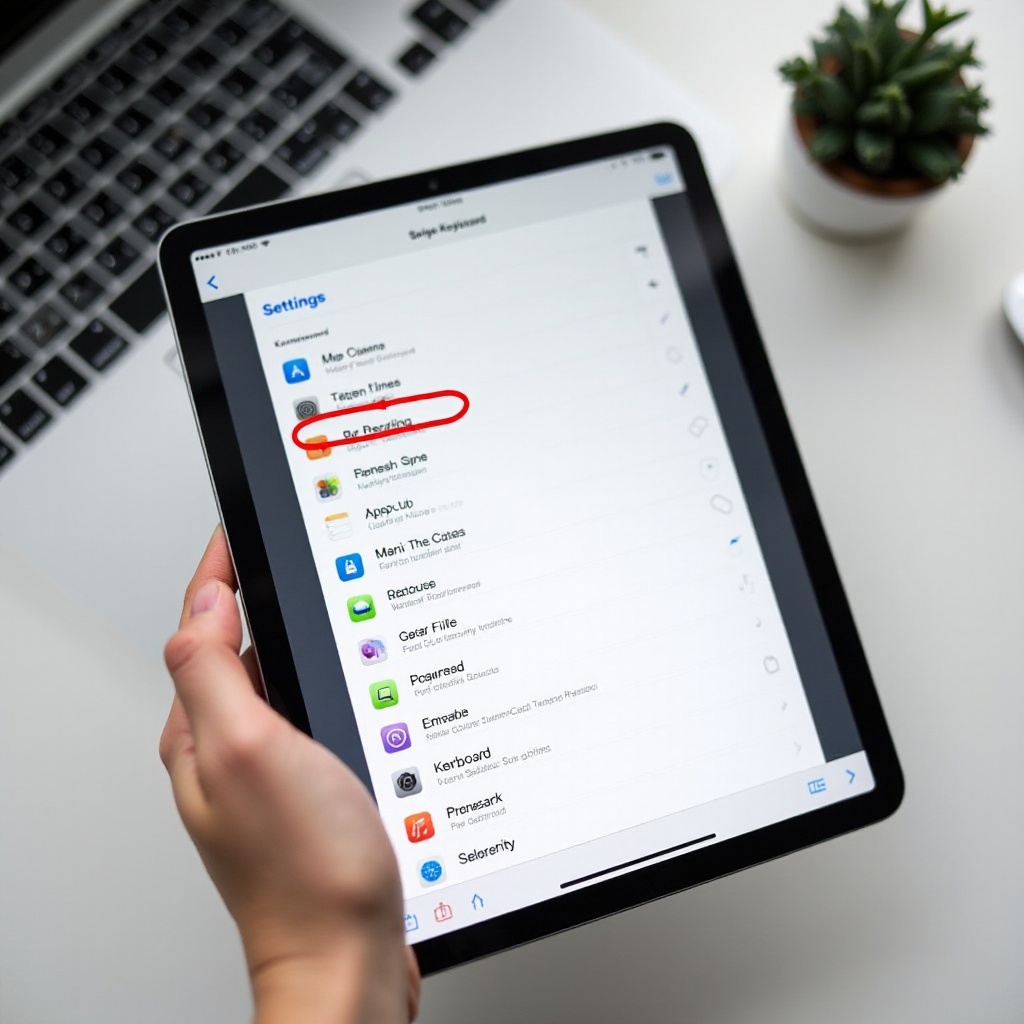Introduction
Enabling the swipe keyboard on your iPad can significantly enhance your typing experience, making it faster and more intuitive. Unlike the traditional tap-to-type method, the swipe typing feature allows users to glide their fingers across keys, forming words without lifting their fingers off the screen. This feature is particularly useful for typing on the go or managing emails and messages quickly.
Understanding the benefits of this keyboard feature and knowing how to set it up can save time and make your iPad usage more enjoyable. Let’s dive into the steps and customizations available for setting up the swipe keyboard on your iPad.

Understanding the Swipe Keyboard Feature
The swipe keyboard feature, also known as gesture typing or glide typing, allows users to form words by sliding their fingers from one letter to another without lifting them off the screen. This technology intelligently predicts the intended word based on the path traced by the user.
- Efficiency: It speeds up typing by reducing the need to precisely tap each key.
- Convenience: Ideal for single-handed typing or when you’re on the move.
- Predictive Text: The built-in predictive text assists in quicker and accurate typing.
Swipe keyboards are praised for their user-friendly design and the seamless experience they offer. Understanding these benefits can help you make the most of this feature on your iPad.

Preparing Your iPad for Swipe Keyboard
Before enabling the swipe keyboard, ensure your iPad is ready for the new feature. Here’s what you need to do:
- Compatibility Check: Ensure your iPad is running on iOS 13 or later, as the swipe keyboard feature is available from this version onwards.
- Backup Your iPad: It’s always a good practice to have a recent backup before making significant changes to your device settings.
- Free Up Space: Ensure that your iPad has enough storage space for any updates and new settings by deleting unnecessary apps and files.
Once your iPad is prepared, you are ready to enable the swipe keyboard.
Step-by-Step Guide to Enable Swipe Keyboard on iPad
Enabling the swipe keyboard requires navigating through the iPad’s settings. Follow these steps:
Check for Software Updates
- Go to ‘Settings’.
- Select ‘General’.
- Tap on ‘Software Update’ to ensure you have the latest iOS version. If there’s an update available, download and install it.
Navigate to Keyboard Settings
- Go back to ‘Settings’.
- Select ‘General’.
- Scroll down and tap ‘Keyboard’.
Enable the Swipe Keyboard Option
- In the Keyboard settings, look for the option named ‘Slide to Type’.
- Toggle the switch to enable the swipe keyboard.
- If available, enable the ‘Delete Slide-to-Type by Word’ option for more efficient corrections.
Your swipe keyboard should now be enabled, allowing you to glide your fingers across the keys to type.

Customizing Your Swipe Keyboard Experience
Once you’ve enabled the swipe keyboard, you might want to customize it to better suit your preferences. Here are some ways to make it your own:
Adjust Swipe Sensitivity
- Go to ‘Settings’.
- Select ‘General’, then ‘Keyboard’.
- Look for swipe sensitivity options and adjust the sensitivity level– higher sensitivity can make typing faster and smoother.
Keyboard Themes and Layouts
Some iPads allow theme and layout customization:
1. Navigate to the keyboard settings.
2. Choose your preferred theme or layout from the available options, ensuring the visual appeal suits your taste.
Third-Party Swipe Keyboard Apps
For additional features, consider third-party swipe keyboard apps like Gboard or SwiftKey:
1. Download and install your preferred app from the App Store.
2. Follow on-screen instructions to enable it as your default keyboard under ‘Settings’ > ‘General’ > ‘Keyboard’.
These customizations can enhance your typing experience by making it more personalized and efficient.
Troubleshooting Common Issues with Swipe Keyboard
If you encounter any issues with the swipe keyboard, follow these troubleshooting steps:
Swipe Detection Problems
- Reboot your iPad to refresh the system.
- Ensure the screen is clean and dry.
- Verify swipe keyboard settings are enabled correctly.
Lag or Slow Performance
- Check for background apps and close unnecessary ones.
- Free up storage space.
- Update your iPad to the latest iOS version.
Compatibility with Other Apps
Some apps might not fully support swipe typing. In such cases:
1. Switch to traditional typing temporarily.
2. Check for app updates or compatibility settings.
These troubleshooting steps should resolve most common issues you might face with the swipe keyboard.
Tips and Tricks for Efficient Typing with Swipe Keyboard
To further enhance your swipe typing efficiency, consider these tips:
Advanced Swiping Techniques
- Practice swiping fluidly without lifting your finger off the screen.
- Familiarize yourself with the most used words and their swipe patterns.
Using Shortcuts and Predictive Text
- Utilize predictive text for quicker typing.
- Customize keyboard shortcuts for repeated phrases to save time.
Fast and Accurate Swiping Tips
- Focus on swiping accurately to ensure predictive text works well.
- Don’t worry about exact key touches; the prediction engine corrects minor slips.
Mastering these techniques can significantly improve your speed and accuracy while typing.
Conclusion
Enabling and customizing the swipe keyboard on your iPad can transform your typing experience. With this handy feature, typing becomes faster, more efficient, and highly intuitive. By following these steps and tips, you can easily set up and enjoy the benefits of swipe keyboard typing.
Frequently Asked Questions
What to do if the Swipe feature is not working?
Ensure your iPad is updated to the latest iOS version, and check the swipe keyboard settings are correctly enabled.
Can I use the Swipe keyboard with third-party apps on my iPad?
Yes, many third-party apps support the swipe keyboard. However, compatibility may vary, so it’s best to check individual app settings.
How do I switch back to the traditional keyboard from the Swipe keyboard?
To switch back, simply disable the “Slide to Type” option under ‘Settings’ > ‘General’ > ‘Keyboard’.